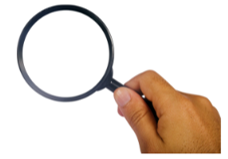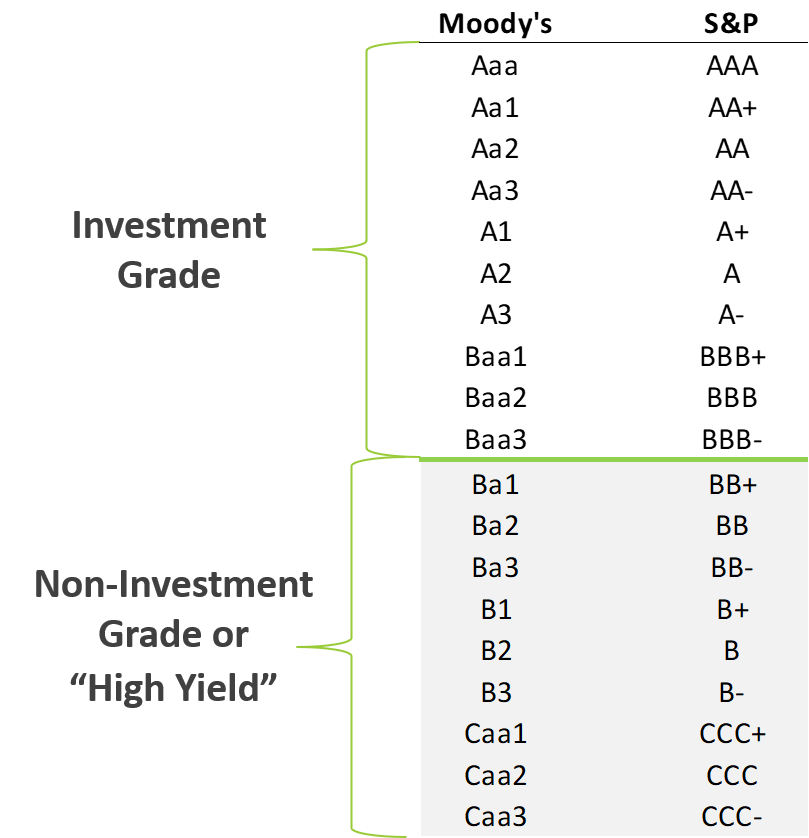On April 6, 2022, Bondsavvy founder and fixed income expert Steve Shaw presented the best high yield bonds to
Bondsavvy subscribers. Some high yield corporate bonds are trading at all-time lows while many issuing-company
profits are at all-time highs. We believe our recommended high yield bonds can appreciate above par value and
achieve annual double-digit total returns.
Subscribe to
Bondsavvy to learn these six best high yield corporate bonds, as well as all 64 corporate bonds we rated either buy or hold as of March 7, 2024. Please note we originally wrote this fixed income blog post on April 10, 2022, and there are references to the 44 bonds we had on our recommended list as of that date.
WHAT'S IN THIS BEST HIGH YIELD BONDS BLOG POST
Bondsavvy publishes the leading blog focused on investing in individual corporate bonds. Click the "Back to
Main Blog" or "Corporate Bond FAQs" buttons to read our other fixed income blog posts. This best high yield
bonds blog post contains the following:
 |
SECTION 1:
Preview of the best high yield bonds we recommended April
6, 2022 |
 |
SECTION 2:
Why Buy High Yield Bonds Now |
 |
SECTION 3:
Summary of BondSavvy's Current 44 Buy / Hold Corporate Bond
Recommendations |
SECTION 1
OUR BEST HIGH YIELD CORPORATE BONDS PREVIEW
During the April 6, 2022 edition of The Bondcast, we presented the six best high yield bonds to BondSavvy
subscribers. We post recordings of this and all subscriber webcasts in the BondSavvy subscriber area.
Figure 1 provides a summary of the high yield bonds we recommended and select details of each recommendation.
Subscribe to
BondSavvy to learn the names and CUSIPs of each recommended high yield bond, key financial and pricing
metrics, credit
spreads, investment rationale, the businesses of our issuing companies, capital structure, capital
allocation, and other key considerations included in our corporate bond research analysis.
Please note that High Yield Bonds 1 and 2 were issued by the same company, as were High Yield Bonds 3 and
4.
Figure 1: Select Details of Best High Yield Bonds Recommended April 6, 20221
|
April 6, 2022 Offer Price |
April 6, 2022 YTM
|
April 8, 2022 EOD
Offer Price |
Leverage Ratio |
|
| High Yield Corporate Bond 1 |
94.01 |
5.07% |
93.00 |
1.1x |
|
| High Yield Corporate Bond 2 |
91.50 |
5.08% |
91.50 |
1.1x |
|
| High Yield Corporate Bond 3 |
94.47 |
6.09% |
94.25 |
1.2x |
|
| High Yield Corporate Bond 4 |
88.94 |
5.72% |
88.27 |
1.2x |
|
| High Yield Corporate Bond 5 |
88.68 |
4.53% |
88.06 |
1.0x |
|
| High Yield Corporate Bond 6 |
92.25
|
6.30% |
91.95 |
1.8x |
|
1 Offer prices and YTM data were from
Fidelity.com. BondSavvy calculates leverage ratios from information provided by issuing company SEC
filings and earnings releases.
Corporate bonds are quoted as a percentage of their $1,000 par value. For example,
High Yield Corporate Bond 1 was quoted at an offer price that was 94.01% of the bond's $1,000
face value, giving it a market value of $940.10.
Attributes of Our Best High Yield Bonds Picks
We have published this blog post so prospective BondSavvy subscribers can get a flavor for
the high yield bonds we recommended April 6, 2022. Key attributes of our best high yield bonds recommendations
include the following:
Strong Risk/Reward Opportunities
High yield bonds with mid-single-digit YTMs, priced in the 80s and 90s, and issued by companies with leverage ratios
less than 2.0x are compelling buys. We believe these bonds can appreciate above par value and achieve
double-digit annual total returns.
There has been a large sell-off in corporate bonds thus far in 2022, with bonds issued by Alphabet and Amazon trading
in the 70s. While many corporate bond prices have fallen, credit quality has generally been improving.
When high yield bond prices go down and default risk decreases, it is often a compelling buying
opportunity.
As shown in Figure 1, all of the best high yield bonds are issued by companies with leverage
ratios below 2.0x, with most right around 1.0x. This is an extraordinarily low number for high yield
bond issuers.
Generally speaking, a leverage ratio of 3.0x or less is typically enough for a corporate bond issuer to obtain an
investment grade bond rating. Due to bond rating methodologies, however, bonds issued by companies that are
smaller in size or are heavily influenced by commodity prices, typically receive bond ratings below investment grade. (Please see
Figure 2 for an explanation of the bond ratings scale and the difference between investment grade and high yield
corporate bonds.)
High Yield Bond Picks Spread Across Four Different Industries
While BondSavvy does not believe in the overdiversification provided by large bond funds and ETFs, we do believe it's
important for corporate bond investors to diversify across industry sectors. Our four newly recommended bond
issuers compete in the chemicals, semiconductor, homebuilding, and manufacturing sectors.
BondSavvy's current 44 corporate bond recommendations contain issuing companies across 11 industries, including:
retail, grocery, transportation, auto, chemicals, healthcare, natural resources, homebuilding & related,
infrastructure, manufacturing, and media & technology.
Five of Six Bonds Have Maturity Dates Within Six to Nine Years
High yield corporate bonds generally have shorter maturity dates than investment grade
corporate bonds. Typically, high yield corporate bonds have maturity dates between 5 to 10 years from the
issuance date. Investment grade corporate bonds, on the other hand, are often issued with 30-year
maturities.
Five of our six best high yield corporate bonds had tenors (the time between the pick date
and the maturity date) of six to nine years, as they mature in 2028-2031. One of our best high yield bonds had
a maturity date in approximately 20 years. It has this longer-term maturity since the bond is a Fallen Angel,
a term for bonds that have been downgraded from investment grade to below investment grade.
Since corporate bonds typically maintain the same terms throughout the life of the bond,
this Fallen Angel bond has retained the long-term maturity characteristic of most investment-grade-rated corporate
bonds.
Recommended High Yield Bonds Still Available at Prices at or Below Pick Date
Prices
Our goal is for BondSavvy subscribers to be able to buy and sell individual corporate bonds at or near the prices at
which we recommend bonds. We have taken multiple actions to limit the market impact of our new bond
recommendations, and we have been pleased with the results thus far.
We recommended the best high yield bonds at 5:00pm EDT on April 6, 2022. Our subscribers began purchasing these
bonds on April 7 and April 8. As shown in Figure 1, at the end of the day on April 8, 2022, the recommended
high yield corporate bonds were still available at prices at or slightly below the pick date price.
SECTION 2
WHY BUY HIGH YIELD CORPORATE BONDS NOW
Many investors will ask "why should I buy high yield bonds when interest rates are rising?" To answer this
question, it's important to understand that "the bond market" is not the monolithic asset class many talking heads
believe it to be.
High Yield Bonds Generally Have Less Sensitivity to Changes in US Treasury Yields
High yield corporate bonds are different from investment grade corporate bonds. Individual corporate bonds are
different from Treasury bonds and municipal bonds. For example, investment grade corporate bond prices can be
highly sensitive to changes in US Treasury yields while high yield corporate bond prices generally are not.
For more discussion on this point, please read our credit spreads blog post, which reviews the different bond price movement
drivers for investment grade and high yield corporate bonds.
For those unfamiliar with what a high yield bond is, it is a bond that has Moody's and S&P bond ratings below
Baa3 / BBB- on the bond ratings scale, as shown in Figure 2
below:
Figure 2: Bond Ratings Scale for Moody's and S&P

Many refer to high yield bonds as "junk bonds," but that term does a great disservice to high yield bond issuers and
their employees. Due to how corporate bond ratings are calculated, there are many cases where bonds with lower
leverage ratios and superior financials have lower bond ratings than large, global companies rated investment
grade.
A key benefit of our best high yield bonds is that they are generally not sensitive to changes in interest rates and
rising US Treasury yields. High
yield corporate bond prices are most impacted by changes in the credit quality of the issuing companies and taxable
bond fund flows.
If there are large bond fund inflows, bond funds must purchase additional bonds, which can drive up corporate bond prices. The opposite
can happen when there are bond fund outflows, which has been a big driver of recent bond price declines.
As a general rule, lower-rated bonds are typically more sensitive to the financial performance of the issuing company
than highly rated bonds such as those issued by Apple. We discuss the key drivers of high yield bond and
investment grade bond price movements in our credit spreads blog post.
Opportunities for Double-Digit Annual Total Returns
BondSavvy seeks to maximize the total returns of each corporate bond we recommend. We look for corporate
bonds that have low prices, high credit spreads, and high YTMs relative to the issuing company's financials.
While three of our best high yield bonds are callable and, as a result, have price ceilings slightly above par,
three bonds are not subject to call schedules and can, therefore, increase higher in price.
With yields in the mid-single digits, recommended high yield bonds achieving capital appreciation of 10-15 points can
achieve strong double-digit annual total returns. To maximize the investment return of our high yield bonds,
we closely monitor our recommended bonds' price performance and the financial performance of our issuing
companies. We then update each buy/sell/hold recommendation quarterly during The Super
Bondcast.
View our corporate bond returns page to see the
investment performance our corporate bond recommendations have achieved.
Ability to Apply a Specific Investment Strategy
A key benefit of owning a portfolio of individual corporate bonds is that investors can create, apply, and modify a
specific investment strategy. This bond investment strategy could include owning bonds in particular
industries that benefit from higher inflation. It could include buying corporate bonds priced at material
discounts to par value. It could also include owning bonds of varying duration and credit quality to address
rising US Treasury yields. Lastly,
such a strategy could maximize total returns by selling bonds when additional capital appreciation was
limited. These are all key components of BondSavvy's investment strategy.
To illustrate, as commodities markets began to recover in mid-2020, BondSavvy began recommending bonds of a number of
energy companies. This included one high yield bond recommendation of the Laredo Petroleum 9.500% '25 bonds,
which we recommended December 18, 2020 at a price of 87.85.
As oil prices recovered, Laredo delivered improved financial performance, which was reflected in a climbing bond
price, as shown in Figure 3. The upside on the Laredo '25 bond was limited, however, as the bond was callable
at a price of 104.75 beginning January 15, 2022. With limited upside remaining and a greater number of buying
opportunities available in high yield corporate bonds, we recommended selling the Laredo bond at 103.71 on March 24,
2022 during The Super Bondcast.
As shown in Figure 3, the Laredo '25 high yield bond investment generated a 31.71% total return compared to a -0.93%
total return for the iShares HYG high yield corporate bond ETF.
Figure 3: Total Return Comparison of Laredo Petroleum 9.50% '25 to iShares iBoxx $ High Yield Corporate Bond
ETF (HYG)

Sources: Laredo Petroleum historical prices are from FINRA TRACE data. The iShares HYG ETF performance chart is
from the iShares website.
Active bond investing strategies are available to investors in individual corporate bonds. They are not,
however, available to bond fund investors, as bond funds own thousands of bonds, with many following a computerized
index rather than attempting to create a winning investment strategy. In addition, since bond funds do not
trade relative to par value and lack underlying financials, it is impossible for investors to assess the value of a
bond fund or ETF. Further, since bond fund prices are generally static, bond fund investors generally cannot
buy low and sell high like investors in individual high yield corporate bonds can.
Important to Invest over Time in High Yield Bonds
When we encourage investors to buy the six best high yield corporate bonds, we are not saying that the prices of
these high yield bonds will immediately go up. We are also not calling a bottom to the recent turmoil in the
US bond market, as prices could fall further.
High yield bond markets can be volatile. To mitigate risk and to capitalize on opportunities, we believe it's
important for bond investors to make new investments over time. With lower prices and strong issuing company
financials, now is a better time to make new investments than it was during many parts of 2021.
That said, if high yield bond prices further decline and issuer financials remain strong, there could be even more
compelling buying opportunities in the future.
SECTION 3
REVIEW OF BONDSAVVY'S 44 CURRENT CORPORATE BOND RECOMMENDATIONS
BondSavvy currently has 44 individual corporate bonds on its recommended list, available exclusively to BondSavvy
subscribers. This includes 23 corporate bonds rated "buy" and 21 bonds rated "hold." BondSavvy
recommends high yield corporate bonds and investment grade corporate bonds each quarter on a subscriber webcast
called The Bondcast. In addition, we update our buy/sell/hold recommendations each quarter
during The Super Bondcast, another webcast series available exclusively to BondSavvy
subscribers.
Through April 9, 2022, we have recommended selling 51 of our previous 95 corporate bond recommendations. Read
our when to sell bonds blog post to learn the factors we consider when
recommending subscribers sell corporate bonds previously on the BondSavvy "buy" list.
Figure 4 shows the breakout of the number of high yield corporate bonds and investment grade corporate bonds we
currently rate buy or hold plus the split of previous bond recommendations we have sold:
Figure 4: BondSavvy's Current and Past Recommendations -- High Yield Bonds vs.
Investment Grade Bonds

GAIN AN EDGE AS A BONDSAVVY SUBSCRIBER
With recently high inflation and the advent of a more hawkish Federal Reserve, many
investors have been selling bond funds. This has driven many high yield and investment grade corporate bond
prices lower, creating values we have not witnessed in years.
BondSavvy empowers subscribers to capitalize on these opportunities by:
- Providing approximately 20 new corporate bond recommendations each year (including both high yield bonds and investment grade bonds)
- Updating buy/sell/hold ratings on all current corporate bond recommendations through quarterly subscriber webcasts and regular email updates
- Identifying corporate bonds subscribers can buy online to ensure the best price and lowest fees
- Presenting subscribers with detailed but easy-to-understand corporate bond analysis they can use to make successful investment decisions
- Providing unmatched expertise to individual investors investing in individual corporate bonds
Our investment recommendations make bond investing easy and more profitable. We give
BondSavvy
subscribers an edge, especially in the highly volatile and unpredictable markets we are experiencing today.
Get Started
Watch Free Sample